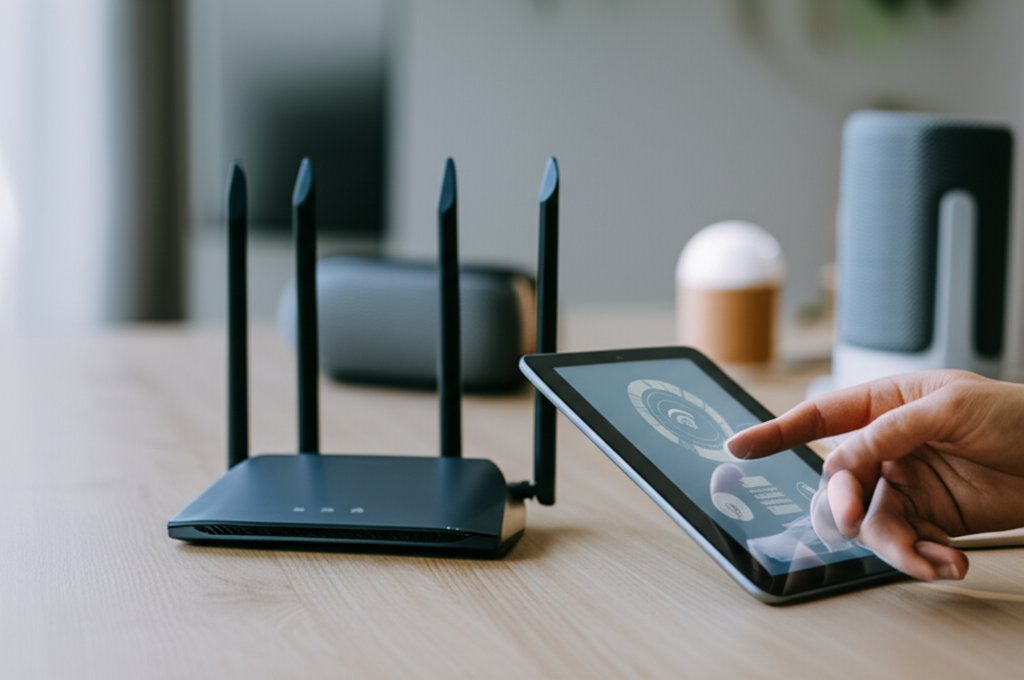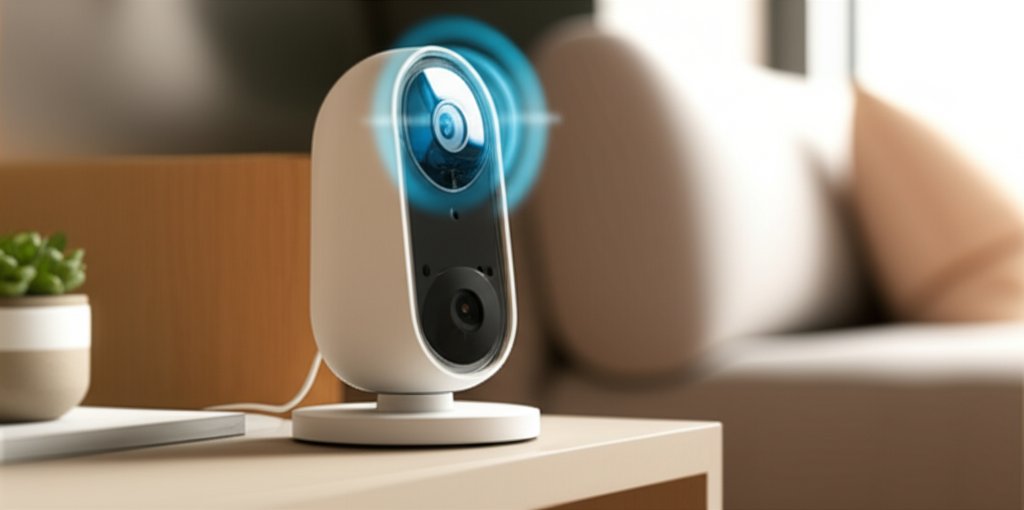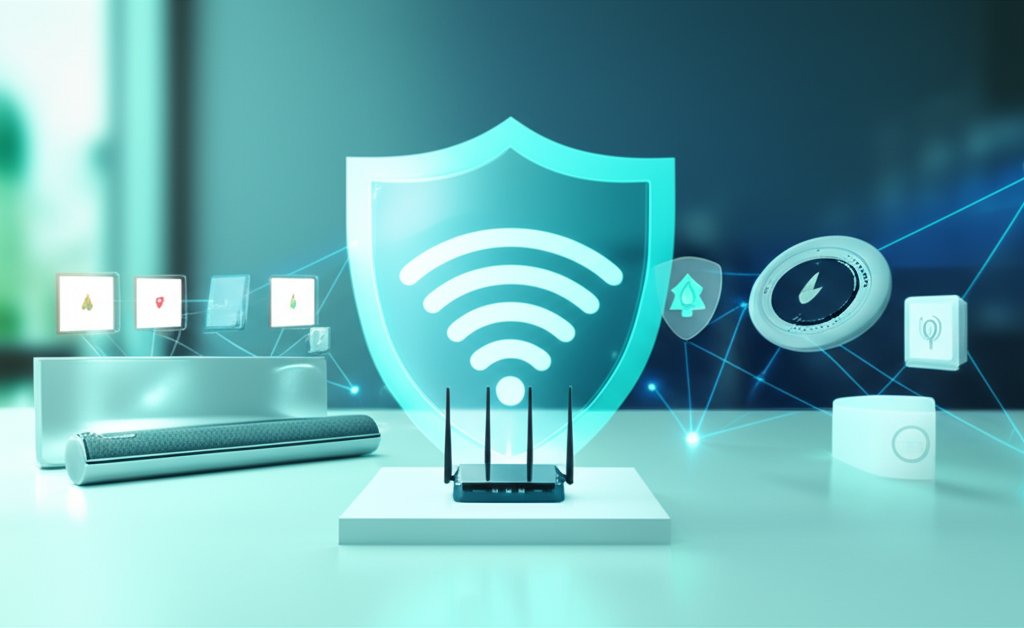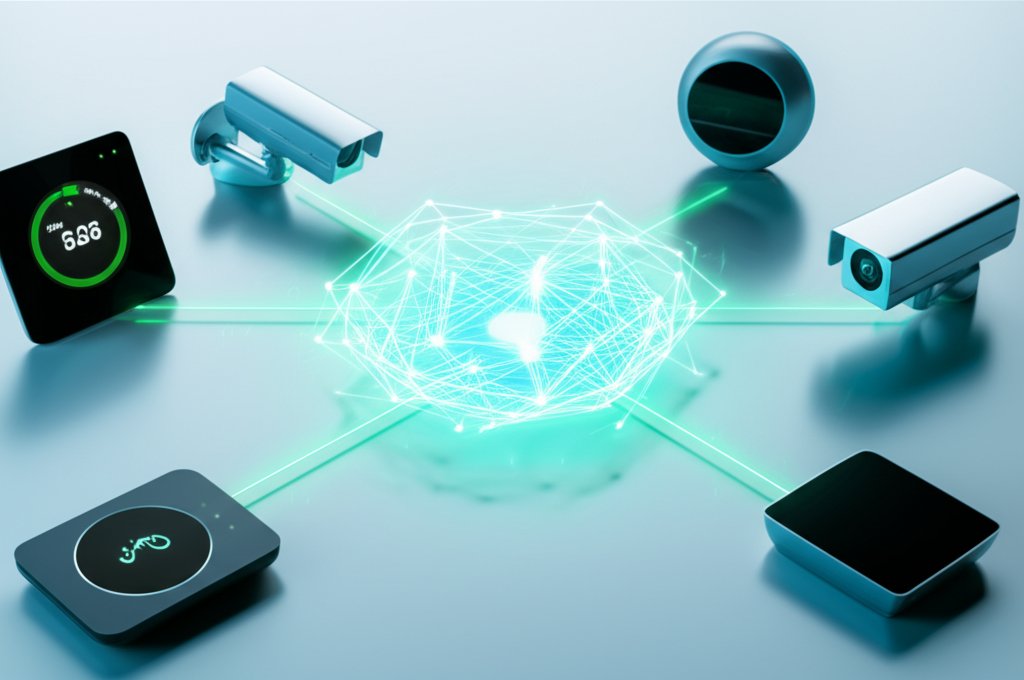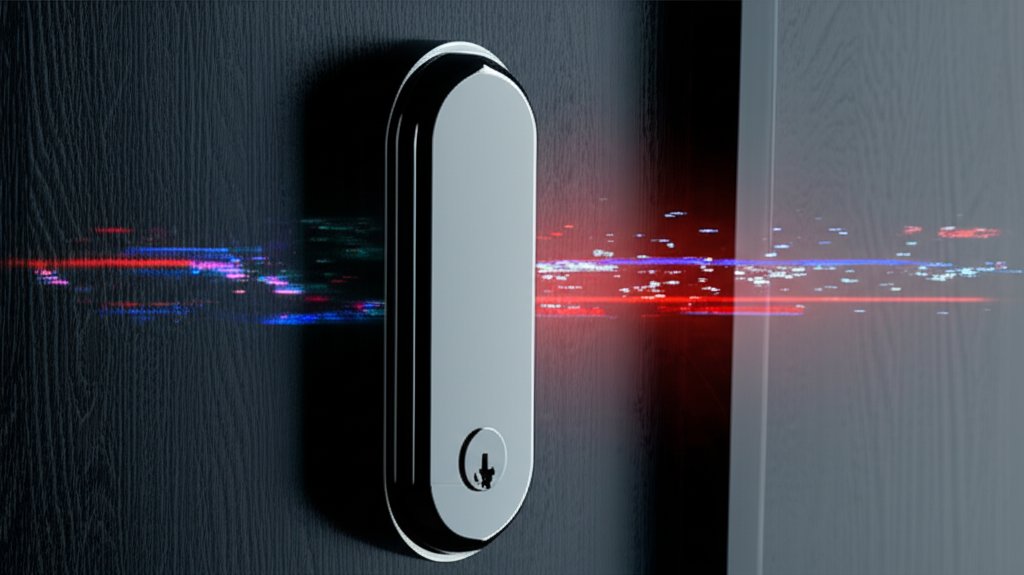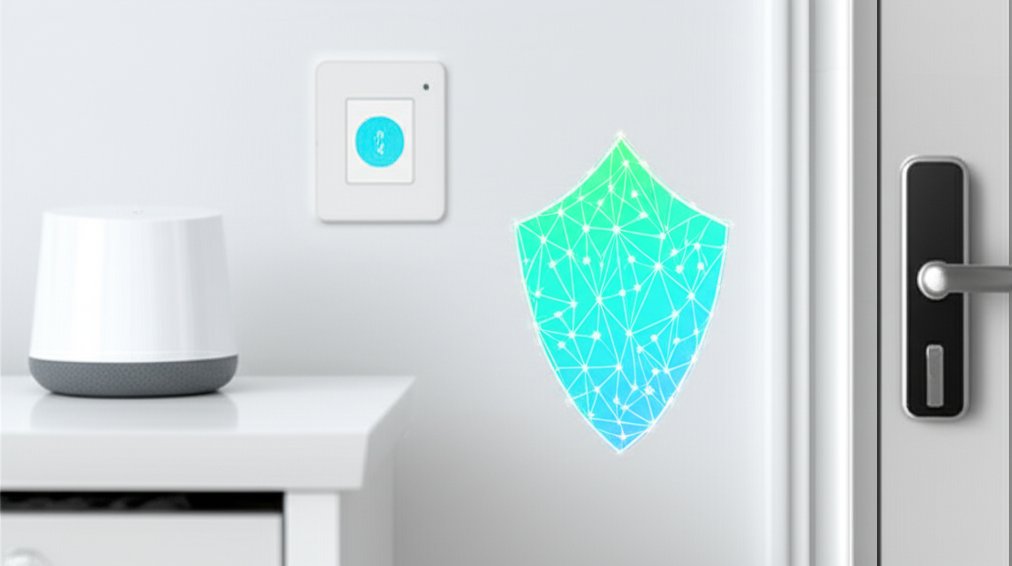Is Your IoT Device a Security Risk? A Comprehensive Home Network Security Checklist
Picture this: you’ve just installed a new smart speaker, a sleek security camera, or perhaps even a smart refrigerator. It’s incredibly convenient, isn’t it? With just a few voice commands or taps on your phone, you’re controlling your home like never before. This is the magic of the Internet of Things (IoT) – everyday objects connecting to the internet, making our lives easier, smarter, and often, more automated. But have you ever stopped to wonder if this convenience comes with a hidden cost? Is your device, designed to simplify your life, actually opening a door for cyber threats?
For everyday internet users and small businesses alike, understanding IoT security isn’t just a technical nicety; it’s a necessity. Every smart network device, from your baby monitor to your smart thermostat, adds another “attack surface” to your digital life. This means more entry points for cybercriminals to potentially exploit. It can feel daunting, we know, but it doesn’t have to be. Our goal today is to demystify these risks and provide you with a practical, actionable checklist that will empower you to secure your connected world, protect your privacy from cyber threats, and gain genuine peace of mind.
The Hidden Dangers: How IoT Devices Become Security Risks
It’s easy to assume that if you buy a smart device from a recognizable brand, it’s inherently secure. Unfortunately, that’s not always the case. For instance, many devices ship with easily guessed default passwords or unpatched software vulnerabilities, turning a convenient gadget into a potential open door for attackers. Many IoT devices are developed with speed-to-market and cost-effectiveness as primary drivers, often sidelining robust security measures. This leaves us, the users, vulnerable. To truly take control, we need to understand the landscape. Let’s break down some of the most common ways these devices can turn into security liabilities for your home or small business network.
Weak Passwords and Default Settings
This is probably the oldest trick in the book for hackers, and it’s still alarmingly effective. Many IoT devices come with generic default credentials like “admin/password” or “0000”. If you don’t change these immediately upon setup, it’s like leaving your front door unlocked with a giant “Welcome” sign for intruders. Even worse, some devices don’t enforce strong password policies, allowing users to set incredibly simple passwords that can be cracked in minutes. We’ve seen countless cases where default passwords were the gateway for unauthorized access to baby monitors, smart cameras, and even entire smart home systems. It’s a simple oversight that can have devastating consequences.
Outdated Software and Firmware
Just like your smartphone or computer, IoT devices run on software, often called firmware. And just like any software, vulnerabilities are discovered over time. Manufacturers release updates to patch these flaws and improve security. However, many IoT devices don’t have automatic update features, or users simply neglect to install them. This leaves known security holes wide open, making your device an easy target for cybercriminals who are always scanning for exploitable weaknesses. A simple firmware update could be the difference between a secure device and one that’s been silently compromised. Consider the recent exploit of a popular smart thermostat due to an unpatched vulnerability – a quick update could have prevented a privacy breach.
Insecure Network Connections
How do your smart devices talk to each other and to the internet? Often, they use communication protocols that might not be fully encrypted. If data is sent unencrypted over your home network or the internet, it can be intercepted by anyone with the right tools. Imagine sensitive data, like video feeds from your security camera or even personal voice commands, being transmitted in plain text. It’s like having a private conversation in the middle of a crowded room where everyone can listen in. This type of vulnerability can lead to privacy breaches and data theft.
Excessive Permissions and Unnecessary Features
Have you ever noticed that some apps or devices ask for permissions that seem totally unrelated to their function? Many IoT devices are designed with a broad range of capabilities, some of which you might never use. Remote access, microphones, or data collection features might be enabled by default even if they’re not essential for the device to work for you. Every enabled feature and every permission granted can potentially expand the “attack surface.” This means more ways for a malicious actor to gain unauthorized access or collect more data than you intended to share. Think about it: does your smart lightbulb really need access to your location data?
The “Domino Effect”: How One Compromised Device Affects Your Entire Network
This is perhaps one of the most insidious risks. A single vulnerable IoT device isn’t just a risk to itself; it can become a beachhead for attackers to infiltrate your entire home network. Once a hacker gains access to one device – say, a smart plug with a default password – they can use it as a pivot point. From there, they can scan your network for other vulnerabilities, potentially accessing your computer, smartphone, or even sensitive files stored on other devices. This is how botnets are formed, where thousands of compromised IoT devices are collectively used to launch massive attacks, often without the owners ever realizing their smart toaster is part of a global cybercrime operation. It’s a sobering thought, isn’t it?
Lack of Security Standards and Support
The IoT market is booming, and new devices are constantly flooding the market. Unfortunately, there isn’t a universally enforced set of security standards that all manufacturers must adhere to. Some brands prioritize functionality and affordability over robust security design and long-term support. This means devices can enter the market with known vulnerabilities, and sometimes, manufacturers might even abandon support for older devices, leaving them permanently exposed to new threats. When researching a new smart device, it’s crucial to consider the manufacturer’s reputation for security and ongoing updates.
Your Comprehensive Home Network Security Checklist for IoT Devices
Feeling a bit overwhelmed? Don’t be! Taking control of your IoT security is entirely within your reach, and it doesn’t require a cybersecurity degree. We’ve broken down the essential steps into an actionable checklist. Let’s secure your digital home, one step at a time.
1. Secure Your Router First (The Gateway to Your Home Network)
Your router is the central nervous system of your home network. All your devices, smart or not, connect through it. Securing it is your first and most critical line of defense.
- Change Default Router Name (SSID) and Password Immediately: Your router came with a default Wi-Fi name and an admin password. Change both! The admin password gives access to your router’s settings, while the Wi-Fi password protects your wireless network. Choose strong, unique passwords for both.
- Use Strong Wi-Fi Encryption (WPA2/WPA3): Always ensure your router is configured to use WPA2 or, even better, WPA3 encryption. These are the most secure protocols available. Avoid older, weaker options like WEP or WPA, which are easily cracked.
- Create a Separate Guest Wi-Fi Network for IoT Devices and Visitors: Most modern routers allow you to set up a separate network, often called a “Guest Wi-Fi.” Use this for all your IoT devices and for any visitors. This isolates your smart devices and guests from your main network where your computers and sensitive data reside, creating a crucial layer of network segmentation.
- Disable Universal Plug and Play (UPnP) If Not Strictly Necessary: UPnP is a protocol designed for ease of use, allowing devices to discover and connect to each other automatically. While convenient, it can also open security holes. Disable it in your router settings unless you have a specific, critical application that absolutely requires it.
- Enable the Router’s Firewall: Your router likely has a built-in firewall. Make sure it’s enabled. It acts as a barrier, inspecting incoming and outgoing traffic and blocking anything suspicious.
2. Smart Device Setup & Management Best Practices
Once your router is locked down, it’s time to focus on your individual smart devices.
- Change Default Passwords & Use Strong, Unique Ones: We can’t stress this enough. For every single IoT device and its associated app, change the default password. Use strong, unique passwords – a mix of uppercase and lowercase letters, numbers, and symbols. A password manager can be an invaluable tool here to keep track of them all.
- Enable Two-Factor Authentication (2FA/MFA): Wherever available for device apps or cloud accounts linked to your IoT devices, enable 2FA. This adds an an extra layer of security, usually requiring a code from your phone in addition to your password. Even if a hacker gets your password, they can’t get in without that second factor.
- Keep Devices and Apps Updated: Make it a habit to regularly check for firmware and software updates from the manufacturers of your IoT devices and their corresponding apps. Better yet, enable automatic updates if the option is available. These updates often contain critical security patches.
- Disable Unnecessary Features & Services: Go through your device’s settings. If you’re not using remote access, a microphone, or a camera feature, turn it off. The fewer active features, the smaller the attack surface.
- Review Privacy Settings: Understand what data your devices collect and how it’s shared. Most smart devices collect a wealth of data about your habits. Take the time to go through their privacy settings and minimize data collection where possible.
- Consider Device Inventory: Keep a simple list of all your connected devices. This helps you keep track of what you own, what needs updating, and what might need to be decommissioned. It’s tough to secure what you don’t even know you have, right?
- Secure Cloud Accounts: Many smart devices rely on cloud services to function. Ensure these cloud accounts are also secured with strong, unique passwords and 2FA. A compromised cloud account can expose all connected devices.
3. Smart Purchasing & Long-Term Vigilance
Security isn’t just about what you already own; it’s about making informed choices for the future and staying alert.
- Research Before You Buy: Before adding a new gadget to your smart home or business, do your homework. Choose reputable brands known for their commitment to security and ongoing support. Check online reviews specifically for security concerns.
- Question Overly Complex or Intrusive Devices: Does that smart toaster really need to connect to the internet? If a device seems to have unnecessary internet connectivity or asks for excessive permissions, think twice. Simpler is often safer.
- Regularly Monitor Your Network: While a bit more advanced, keep an eye out for unusual activity on your network. Some routers or third-party tools can show you what devices are connected. Look for unknown devices or spikes in data usage from an unexpected source.
- Securely Decommission Devices: When you’re ready to sell, donate, or dispose of an IoT device, always perform a factory reset. This wipes your personal data and settings, preventing anyone else from accessing your information or using your old device to breach your network.
What to Do If an IoT Device is Compromised
Even with the best precautions, sometimes things go wrong. If you suspect one of your IoT devices has been compromised, quick action is key to minimizing damage.
- Immediately Isolate the Device: Unplug it from power or disconnect it from your Wi-Fi network. This stops it from communicating with attackers or other devices on your network.
- Change All Associated Passwords: Change the password for the compromised device, your Wi-Fi network password, and any cloud accounts linked to the device.
- Check for and Install Any Available Security Updates: Manufacturers might release emergency patches for newly discovered vulnerabilities. Install them immediately if available.
- Perform a Network Scan (for advanced users/small businesses): If you have network scanning tools, run one to check for other compromised devices or suspicious activity.
- Consider a Factory Reset of the Device: While inconvenient, a factory reset will revert the device to its original state, often clearing any malicious software.
- Report the Incident to the Manufacturer: If you believe it’s a widespread vulnerability, report it to the device manufacturer. This helps them address the issue for other users.
Empowering Your Home and Small Business with IoT Security
The world of connected devices is only going to grow, and so will the importance of robust security practices. We understand that tackling cybersecurity can feel like a chore, but it doesn’t have to be technically complex. By implementing these practical steps, you’re not just protecting your gadgets; you’re safeguarding your personal data, your privacy, and the integrity of your home and business operations. It’s about peace of mind in an increasingly interconnected world.
Why not start small? Pick one or two items from this checklist and implement them today. Every step you take makes your digital life more secure.
Conclusion
Our smart devices offer unparalleled convenience, but they also introduce new avenues for cyber threats. From weak default passwords to unpatched firmware, the risks are real, but they’re also manageable. By understanding these vulnerabilities and proactively implementing our comprehensive home network security checklist, you can significantly reduce your exposure. Take control, protect your privacy, and enjoy the benefits of your smart home with confidence. Proactive cybersecurity isn’t just a recommendation; it’s an essential part of thriving in our modern, interconnected world.
